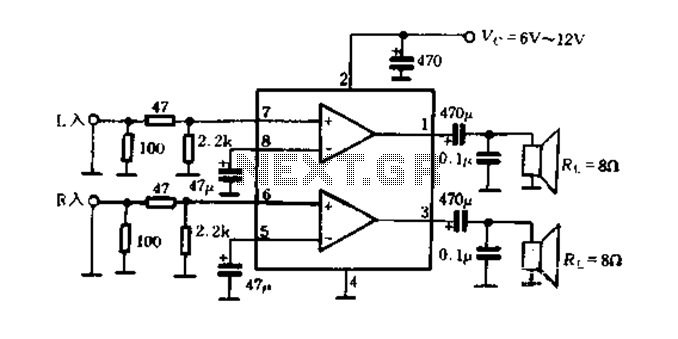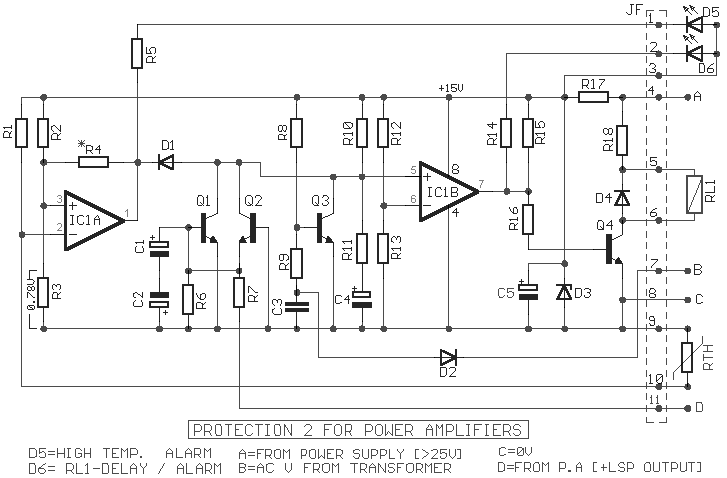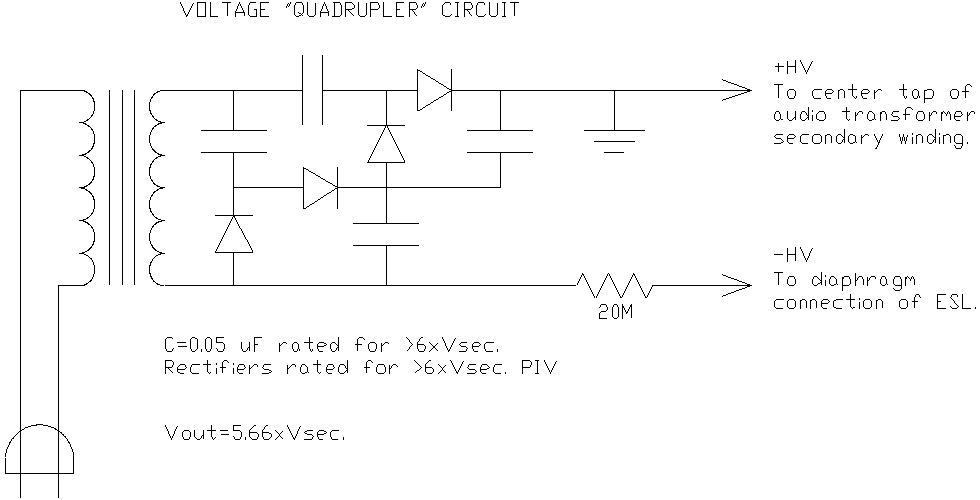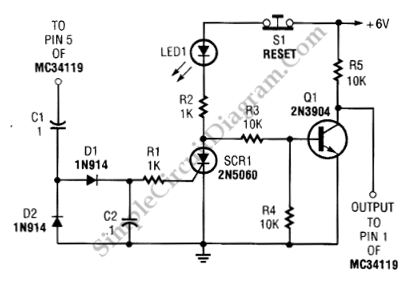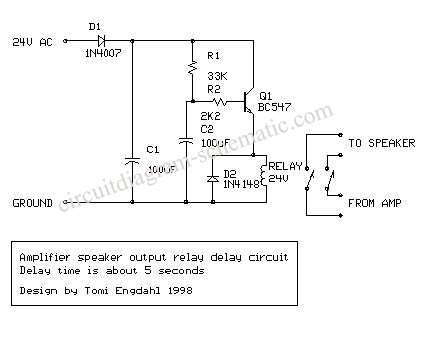
Speakers

An old, nonfunctional DVD player donated by the Engineering Department was repurposed to serve as an enclosure for an audio amplifier. To accommodate the nearly 16 lb toroidal transformer and 2-inch diameter filter capacitors, various sheet metal braces were machined. A 25A rectifier bridge was secured to a heatsink mounted at the bottom of the enclosure, and a temporary brace was installed to hold the mains power switch and fuse holder. The current state of the amplifier construction process is illustrated in Figure 1. Given that the +12V, -12V, and +5V regulators can only handle a maximum of 30V input, a smaller 24VCT 700mA frame-type transformer was also installed to supply power to the lower voltage circuitry, including preamplifiers, delay circuitry, and output relay controllers. The original delay circuit was modified for an adjustable delay setting via a potentiometer, incorporating an LM311 comparator to provide a definite logic level transition. The modified power supply circuit is depicted in Figure 2, while the assembled delay/voltage regulation circuit is shown in Figure 3. Upon activation, both the delay circuit and the main high-current power supply functioned correctly. The unloaded mains voltage was measured at +/-34VDC, and the smaller power supply produced the expected +12V, -12V, and +5V outputs, along with a 0-5V logic level delay signal. Due to the reservoir capacitance of the small power supply being only 1000uF per rail, local capacitative decoupling is critical for maintaining clean voltage levels in the preamplifier circuitry. To avoid ground loops, the center taps of the transformers are not directly connected to the chassis but are linked through the circuitry at the point where the audio input connector grounds attach to the case. This design minimizes susceptibility to external interference and prevents the formation of a loop antenna that could significantly degrade noise performance. With the amplifier schematic nearing finalization and the power supply constructed and tested, the design for the amplifier PCB will be prepared for manufacture in the upcoming week.
The described audio amplifier project utilizes a repurposed DVD player chassis, enhancing its utility by housing an audio amplifier system. The mechanical design includes custom sheet metal braces that provide robust support for heavy components such as the toroidal transformer and filter capacitors. The installation of a 25A rectifier bridge on a heatsink ensures efficient heat dissipation, which is crucial for maintaining performance during operation.
The power supply design is particularly noteworthy, as it incorporates both high and low voltage transformers to cater to different circuit requirements. The inclusion of a 24VCT transformer allows for the safe operation of low-voltage components while ensuring that the high-voltage sections are adequately powered. The adjustment capability in the delay circuit, facilitated by a potentiometer, enhances the versatility of the amplifier, allowing users to customize the delay according to their needs. The LM311 comparator plays a vital role in ensuring reliable logic level transitions, critical for the stability of digital control signals.
Furthermore, careful attention to decoupling and grounding practices is evident, with local capacitance being emphasized to maintain voltage integrity. The strategic grounding method minimizes potential noise issues by preventing ground loops, which is essential for high-fidelity audio applications. The finalization of the amplifier schematic and the forthcoming PCB design signify the project's progression towards completion, promising a well-engineered audio amplifier ready for practical implementation.An old nonfunctional DVD player donated by the Engineering Department was gutted to provide an appropriate enclosure for the audio amplifier. To mount the nearly 16 lb toroidal transformer and 2in diameter filter capacitors, various sheet metal braces were machined in the shop.
The 25A rectifier bridge was bolted to a heatsink attached to the bott om of the enclosure, and a temporary brace was attached to hold the mains power switch and fuse holder. The current state of the amplifier construction process is shown in Figure 1. Because the +12V, -12V, and +5V regulators can only take a maximum of 30V at the input, a smaller 24VCT 700mA frame-type transformer was also mounted to power the lower voltage circuitry (preamplifiers, delay circuitry, output relay controllers).
The delay circuit originally presented was modified to allow for an adjustable delay setting via a potentiometer, and a LM311 comparator was included to make a definite logic level transition. The modified power supply circuit is shown below in Figure 2, and the assembled delay/voltage regulation circuit is shown in Figure 3.
Upon turn on, the delay circuit and main high current power supply worked correctly. Mains unloaded voltage was measured at +/-34VDC, and the smaller power supply produced as expected +12V, -12V, and +5V, as well as the 0-5V logic level delay signal. Since the reservoir capacitance of the small power supply is only 1000uF per rail, local capacitative decoupling will be important for clean voltage levels in the preamplifier circuitry.
To prevent ground loops, the center taps from the transformers are not connected directly to the chassis, but will be linked to the chassis through the circuitry at the point where the audio input connector grounds are attached to the case. This provides most immunity to external interference while preventing a loop antenna from forming that would dramatically degrade noise performance.
Now that the amplifier schematic is more or less finalized and the power supply is built and tested, the amplifier PCB will be designed and sent out for manufacture in the next week. 🔗 External reference
The described audio amplifier project utilizes a repurposed DVD player chassis, enhancing its utility by housing an audio amplifier system. The mechanical design includes custom sheet metal braces that provide robust support for heavy components such as the toroidal transformer and filter capacitors. The installation of a 25A rectifier bridge on a heatsink ensures efficient heat dissipation, which is crucial for maintaining performance during operation.
The power supply design is particularly noteworthy, as it incorporates both high and low voltage transformers to cater to different circuit requirements. The inclusion of a 24VCT transformer allows for the safe operation of low-voltage components while ensuring that the high-voltage sections are adequately powered. The adjustment capability in the delay circuit, facilitated by a potentiometer, enhances the versatility of the amplifier, allowing users to customize the delay according to their needs. The LM311 comparator plays a vital role in ensuring reliable logic level transitions, critical for the stability of digital control signals.
Furthermore, careful attention to decoupling and grounding practices is evident, with local capacitance being emphasized to maintain voltage integrity. The strategic grounding method minimizes potential noise issues by preventing ground loops, which is essential for high-fidelity audio applications. The finalization of the amplifier schematic and the forthcoming PCB design signify the project's progression towards completion, promising a well-engineered audio amplifier ready for practical implementation.An old nonfunctional DVD player donated by the Engineering Department was gutted to provide an appropriate enclosure for the audio amplifier. To mount the nearly 16 lb toroidal transformer and 2in diameter filter capacitors, various sheet metal braces were machined in the shop.
The 25A rectifier bridge was bolted to a heatsink attached to the bott om of the enclosure, and a temporary brace was attached to hold the mains power switch and fuse holder. The current state of the amplifier construction process is shown in Figure 1. Because the +12V, -12V, and +5V regulators can only take a maximum of 30V at the input, a smaller 24VCT 700mA frame-type transformer was also mounted to power the lower voltage circuitry (preamplifiers, delay circuitry, output relay controllers).
The delay circuit originally presented was modified to allow for an adjustable delay setting via a potentiometer, and a LM311 comparator was included to make a definite logic level transition. The modified power supply circuit is shown below in Figure 2, and the assembled delay/voltage regulation circuit is shown in Figure 3.
Upon turn on, the delay circuit and main high current power supply worked correctly. Mains unloaded voltage was measured at +/-34VDC, and the smaller power supply produced as expected +12V, -12V, and +5V, as well as the 0-5V logic level delay signal. Since the reservoir capacitance of the small power supply is only 1000uF per rail, local capacitative decoupling will be important for clean voltage levels in the preamplifier circuitry.
To prevent ground loops, the center taps from the transformers are not connected directly to the chassis, but will be linked to the chassis through the circuitry at the point where the audio input connector grounds are attached to the case. This provides most immunity to external interference while preventing a loop antenna from forming that would dramatically degrade noise performance.
Now that the amplifier schematic is more or less finalized and the power supply is built and tested, the amplifier PCB will be designed and sent out for manufacture in the next week. 🔗 External reference
